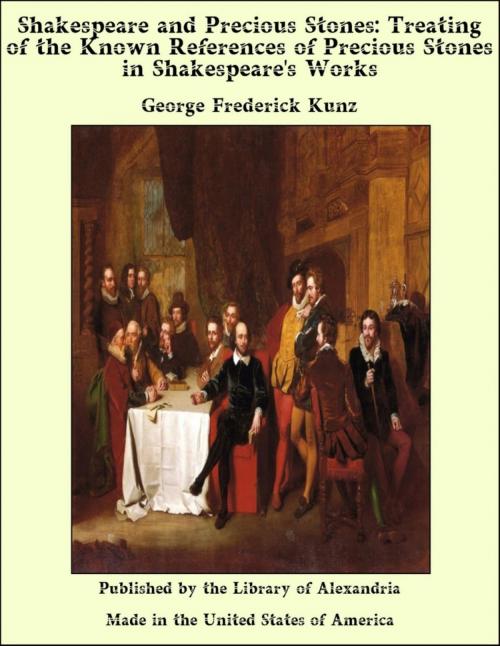Shakespeare and Precious Stones: Treating of the Known References of Precious Stones in Shakespeare's Works
Nonfiction, Religion & Spirituality, New Age, History, Fiction & Literature| Author: | George Frederick Kunz | ISBN: | 9781465588128 |
| Publisher: | Library of Alexandria | Publication: | March 8, 2015 |
| Imprint: | Language: | English |
| Author: | George Frederick Kunz |
| ISBN: | 9781465588128 |
| Publisher: | Library of Alexandria |
| Publication: | March 8, 2015 |
| Imprint: | |
| Language: | English |
As no writer has made a more beautiful and telling use of precious stones in his verse than did Shakespeare, the author believed that if these references could be gathered together for comparison and for quotation, and if this were done from authentic and early editions of the great dramatist-poet's works, it would give the literary and historical student a better understanding as to what gems were used in Shakespeare's time, and in what terms he referred to them. This has been done here, and comparisons are made with the precious stones of the present time, showing what mines were known and gems were worn in Shakespeare's day, and also something of those that were not known then, but are known at this time. The reader is also provided with a few important data serving to show what could have been the sources of the poet's knowledge regarding precious stones and whence were derived those which he may have seen or of which he may have heard. As in this period the beauty of a jewel depended as much, or more, upon the elaborate setting as upon the purity and brilliancy of the gems, the author has given some information regarding the leading goldsmith-jewellers, both English and French, of Shakespeare's age. Thus the reader will find, besides the very full references to the poet's words and clear directions as to where all the passages can be located in the First Folio of 1623, much material that will stimulate an interest in the subject and promote further independent research.
As no writer has made a more beautiful and telling use of precious stones in his verse than did Shakespeare, the author believed that if these references could be gathered together for comparison and for quotation, and if this were done from authentic and early editions of the great dramatist-poet's works, it would give the literary and historical student a better understanding as to what gems were used in Shakespeare's time, and in what terms he referred to them. This has been done here, and comparisons are made with the precious stones of the present time, showing what mines were known and gems were worn in Shakespeare's day, and also something of those that were not known then, but are known at this time. The reader is also provided with a few important data serving to show what could have been the sources of the poet's knowledge regarding precious stones and whence were derived those which he may have seen or of which he may have heard. As in this period the beauty of a jewel depended as much, or more, upon the elaborate setting as upon the purity and brilliancy of the gems, the author has given some information regarding the leading goldsmith-jewellers, both English and French, of Shakespeare's age. Thus the reader will find, besides the very full references to the poet's words and clear directions as to where all the passages can be located in the First Folio of 1623, much material that will stimulate an interest in the subject and promote further independent research.















